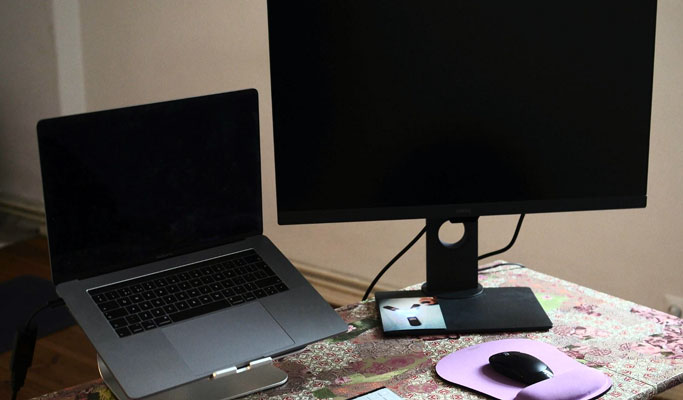Office ergonomics has become a growing concern as more people spend extended hours behind a desk. Whether working from home or in a traditional office, the effects of sitting for too long can be detrimental, including fatigue, back pain, and lack of focus, being just a few common issues. Enter the adjustable desk, a workspace innovation designed to counteract the physical strain of sedentary habits and create a more health-conscious working environment.
Unlike traditional desks, adjustable desks, or sit-stand desks allow users to alternate between sitting and standing positions throughout the day. This flexibility has led many to consider them not just a trendy accessory, but a critical tool for sustaining energy and focus during long workdays.
The Health Risks of Prolonged Sitting
Most office workers sit for six to ten hours a day, often without taking significant breaks. Research shows that this level of inactivity is linked to a higher risk of chronic health conditions such as cardiovascular disease, obesity, diabetes, and even early mortality. Sitting for long periods can slow down metabolism, increase joint stiffness, and weaken core muscles.
These physical issues don’t just affect your body; they also impact productivity. Aches and discomfort lead to distractions, reduced output, and in many cases, absenteeism due to stress or injury. While proper posture and ergonomic seating help, they only go so far when the default position is stationary.
Why More Professionals Are Switching to Standing Options
The ability to alternate positions is a game-changer for people who work long hours. Adjusting your posture from sitting to standing throughout the day improves circulation, relieves pressure from your lower back, and helps reduce mental fatigue. These benefits explain the growing popularity of the best sit stand desk models, which offer ergonomic support and modern features like programmable height settings, cable management systems, and enhanced stability. Users can raise or lower the desk height with the touch of a button, making it easy to change positions without disrupting workflow. For those who prefer variety and control, advanced desks offer memory presets and reminders to stand, promoting consistency in healthy habits.
Incorporating a sit-stand desk into your daily routine doesn’t just improve comfort; it creates a dynamic work environment that supports both physical health and mental engagement.
Improving Posture and Reducing Strain
Poor posture is one of the leading causes of back and neck pain in office settings. Slumping forward or craning your neck for hours places unnecessary stress on the spine and supporting muscles. Adjustable desks encourage users to remain mindful of posture by promoting upright alignment while standing.
When properly configured, a standing desk positions your monitor at eye level, your elbows at a 90-degree angle, and your wrists in a neutral position. These small adjustments add up, significantly reducing musculoskeletal strain and encouraging healthier alignment throughout the body.
Ergonomic accessories like anti-fatigue mats, footrests, and monitor arms further enhance comfort, allowing users to customize their workspaces according to their individual needs.
Boosting Energy and Focus
One of the less obvious benefits of switching to an adjustable desk is the cognitive boost it provides. Standing activates the muscles and increases blood flow, delivering more oxygen to the brain and enhancing mental clarity. Many users report improved concentration, faster decision-making, and reduced afternoon slumps after transitioning to a sit-stand routine.
Alternating between sitting and standing reduces the monotony of the workday, which can help combat feelings of burnout. A more energized body supports sharper thinking and more sustained attention, both crucial for high-performing professionals.
This benefit becomes even more important during long virtual meetings or when juggling multiple deadlines, where mental fatigue can sabotage even the most motivated workers.
Supporting Weight Management and Physical Activity
Adjustable desks make it easier to incorporate light physical activity into your daily routine. Standing burns slightly more calories than sitting and may encourage more frequent movement, such as pacing during phone calls or stretching between tasks.
While not a substitute for exercise, small changes in daily behavior add up. Some users take the next step by integrating under-desk treadmills or balance boards, making movement a part of the workday without compromising productivity.
These practices can support better weight management, cardiovascular health, and a more active lifestyle, even for those with demanding desk-based jobs.
Flexible Design for Hybrid and Home Offices
As remote and hybrid work becomes more common, the need for flexible furniture solutions has grown. Adjustable desks fit seamlessly into both traditional office layouts and home workspaces. Their customizable height settings accommodate different users in shared workstations or families working from home.
Many modern models feature sleek designs, durable materials, and compact footprints, making them suitable for small spaces or multipurpose rooms. Some even include built-in USB ports or wireless charging pads for added functionality.
For those who prioritize both aesthetics and function, today’s adjustable desks provide stylish options without sacrificing performance or ergonomic value.
Encouraging Long-Term Health Habits
Incorporating a sit-stand desk into your daily life sets the tone for other positive health behaviors. People who adopt standing desks often become more aware of their physical well-being, leading to improved hydration, more frequent breaks, and better eating habits throughout the day.
Employers who provide adjustable desks may find increased employee satisfaction and retention. A commitment to workplace wellness sends a strong message about valuing health and productivity, which resonates with today’s workforce.
These subtle shifts can yield long-term benefits in morale, engagement, and quality of life, both at work and beyond.

Adjustable desks are more than just a trend; they’re a practical solution to some of the most common problems faced by today’s workforce. From reducing physical strain to enhancing focus and long-term health, the benefits of a sit-stand workstation are too significant to ignore.
Whether you’re outfitting a home office or upgrading your corporate workspace, investing in an adjustable desk can transform your daily routine. It’s not about standing all day, it’s about having the flexibility to move, stay alert, and work in a way that supports your well-being. In the long run, this small shift can make a major difference.









